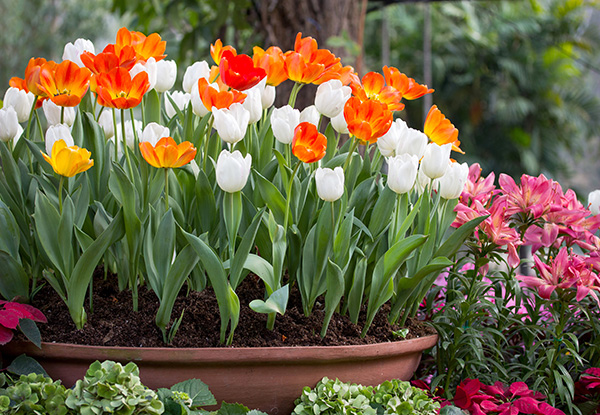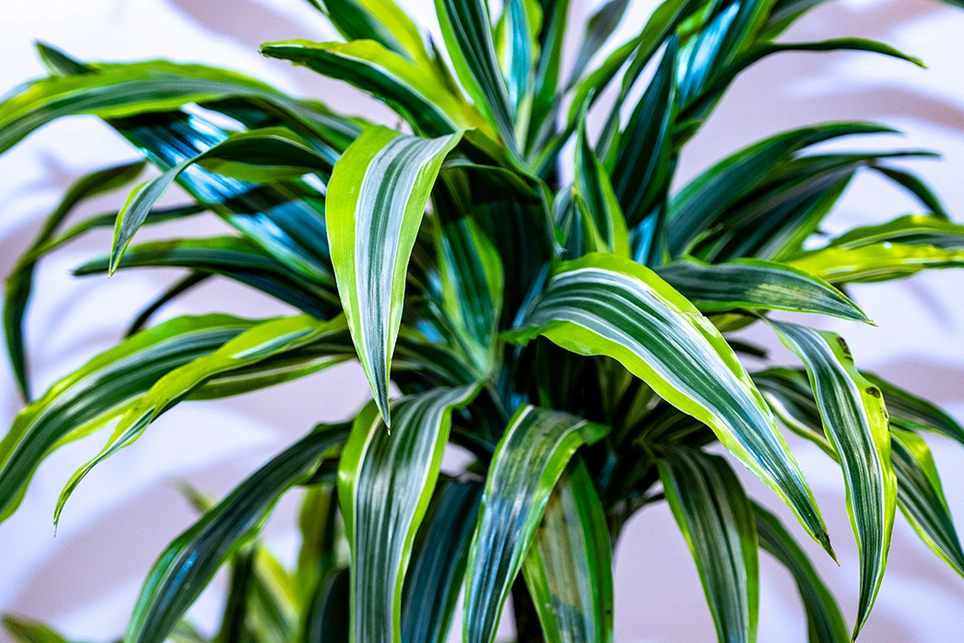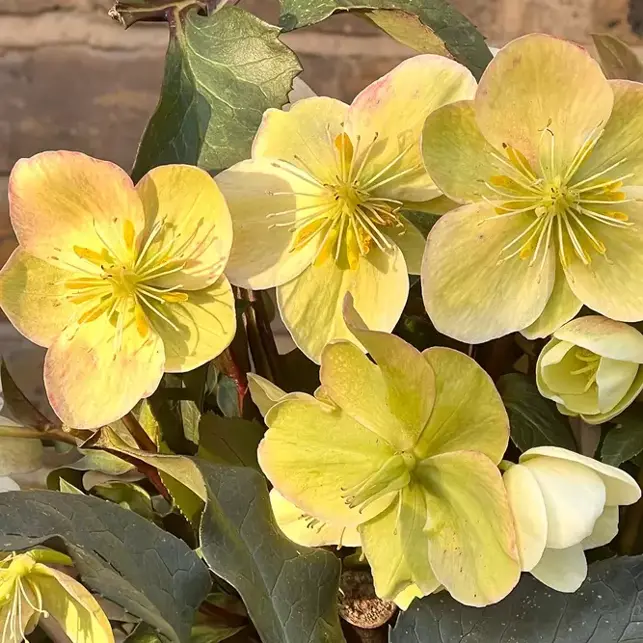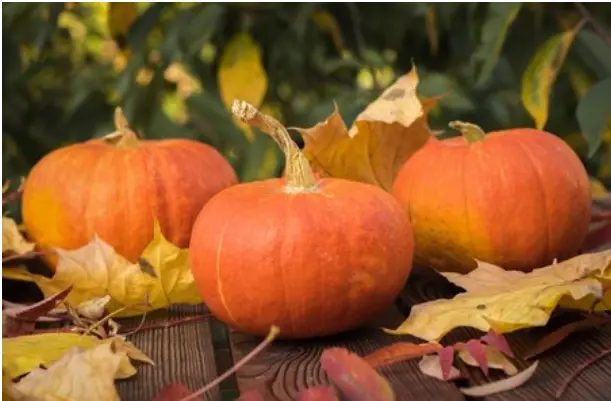
October in UK landscapes is a month of dramatic change. Trees transform into a spectrum of golds, oranges, and reds, and the fallen leaves create natural mulch as plants start their seasonal dormancy. The increased rainfall softens the ground, making it an excellent time for planting hardy shrubs, bulbs, and perennials, while also nourishing the soil. Wildlife adjusts too, with birds preparing for the leaner months ahead.
As the trees turn, it’s time to harvest apples, collect leaf mould, finish up your last mowing of the season, prepare your garden for winter months, and start planning for winter and spring. And to get you started, here are Boma's top gardening jobs and gardening tips for October as Autumn is in full swing.
Top Urban Houseplant & Gardening Tips For October
1: Evergreen Shrubs and Autumn Planting
October is the perfect time to plant hardy evergreens like Skimmia, Mahonia, Pittosporum, and Laurus nobilis (bay laurel). These shrubs add structure to your garden year-round. Ferns like Arachniodes and Polystichum flourish in the shady corners of urban gardens, while ornamental grasses such as Stipa bring movement and texture.
Include herbaceous perennials to give colour and structure for longer. Plant evergreen shrubs, bare-root roses, berry shrubs, small trees, and winter or early-spring bloomers like witch hazel and jasmine now, taking advantage of moist soil for root establishment and long-term structure in your garden. Incorporate hardy evergreens and groundcovers like conifers, yew, ivy, honeysuckle, and periwinkle into beds and containers for year-round interest.
The natural breakdown of falling leaves creates mulch that insulates the soil and retains moisture, providing a low-maintenance way to enrich your garden. Sweep up fallen leaves to create leaf mould—an excellent soil conditioner. The regular rain and mild areas help these plants root effectively, ensuring survival through first frosts and the colder months.
2: Planting Spring Bulbs
October is a key time for planting spring-flowering bulbs like daffodils, hyacinths, alliums, and irises for those wanting their garden to flower early. These bulbs need the winter cold to establish strong roots and bloom in the spring. If you’re working with containers or small garden spaces, try lasagna planting, where bulbs are layered by depth, creating a staggered display in spring. You can even plant tulip bulbs all the way through to November, to avoid fungal issues.
Plant paperwhite daffodil and hyacinth bulbs indoors for fragrant winter flowers, choosing specially prepared bulbs. Make sure containers are raised with pot feet to help prevent waterlogging in dry weather.
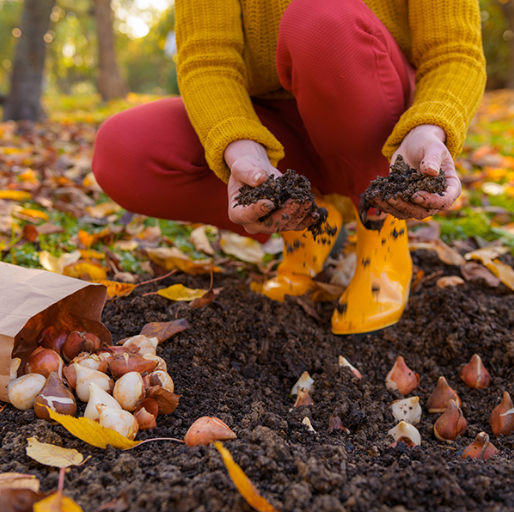
3. Refresh Autumn Bedding Plants
Autumn bedding plants like Cyclamen, Violas, and Pansies thrive in the cooler weather. These low-maintenance options are ideal for brightening up window boxes, borders, and containers through the autumn and into winter. Heuchera adds colour and contrast with its vibrant foliage, making it a great companion to Cyclamen and Skimmia in autumn planters.
If you want a quick and simple way to refresh your garden, ready-made planters offer the perfect solution. Combinations of Cyclamen, Heuchera, Skimmia, and Pansies are available and can easily be placed on patios, doorsteps, or balconies to give a seasonal pop of colour without much effort. Boma has Outdoor Potted Plants, available for delivery throughout London.
Remember to clear away dead foliage and old foliage from previous seasons, and add it to your compost bin to build up healthy soil.
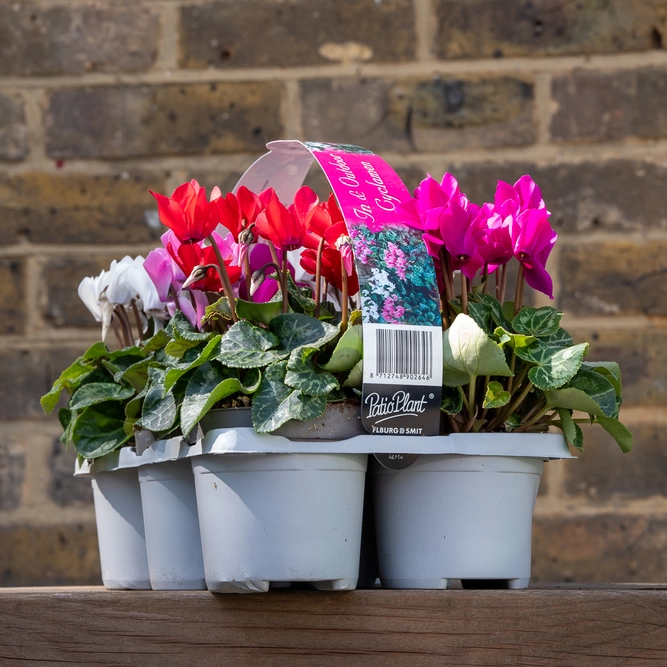
4: Design with Your Space and Location in Mind
Choose plants suited for your specific outdoor type—compact balconies in Belsize Park or Camden do well with smaller evergreens, trailing or climbing houseplants, and multi-layered planters, while larger gardens in Hampstead and Finchley can support laurel hedges, mature shrubs, or wildlife-friendly trees.
For St John’s Wood or Muswell Hill roof terraces, focus on drought-resistant ornamental grasses, Stipa, or blue fescue in deep containers to handle wind and sun exposure.
If you garden in shaded courtyards in Highgate or around Camden’s Georgian flats, make the most of vertical gardening—grow ferns and ivies up walls and use shelves for cyclamen or compact heucheras in pots. In Central London flats with limited space, arrange window boxes with autumn pansies and heuchera, offset by Peace Lily indoors for clean air and year-round foliage.
If gardening in windy, exposed spots, protect plants against autumn winds and early frosts by securing them to supports and covering with mulch or fleece. For patios or raised beds, improve drainage by raising pots with pot feet or bricks, and ensure good air circulation to minimise risk of frost damage.
5: Lawn and Soil Care
October gardening jobs are also ideal for establishing or reseeding a lawn, giving it a last cut, aerating and scarifying, and spreading lime to prevent moss, relieving compaction after summer. This allows water and nutrients to penetrate deeper into the soil. After aerating, apply a low-nitrogen autumn-suitable lawn feed to strengthen your lawn through the winter.
In urban gardens, where lawns are often compacted by foot traffic, this is particularly important. Additionally, scarifying the lawn—removing thatch and moss—will improve its health and appearance.
Sweep up fallen leaves to create leaf mould, an excellent soil conditioner. If you don’t have space for a compost heap, you can gather leaves into black bin bags with holes poked in them and store them out of sight. In a year or two, the leaves will break down into nutrient-rich leaf mould.
6: Pruning and Dividing Perennials
Now’s the time to prune climbing roses and reduce shrub roses by half to prevent wind damage during winter storms. You can also lift and divide perennials like geraniums, salvias, daylilies, and agapanthus to refresh their growth and prevent overcrowding. Secure climbing plants, like roses and honeysuckle, by tying in new growth to supports before storms or heavy snow arrive.
Use garden forks back-to-back to gently tease apart roots or, for tougher clumps, cut through woody roots with a spade or sharp knife. If you have summer-fruiting raspberries, cut this year’s fruited canes down to ground level, leaving only the new canes that will bear fruit next summer. Trim hedges for neatness now before frost sets in.
7: Planting and Harvesting Vegetables
Encourage pumpkins to ripen by cutting back leaves so sunlight can reach the fruit, and check for ripeness by tapping for a hollow sound. Harvest the last of your runner beans and French beans. After cutting them down, leave the roots in the ground to naturally release nitrogen into the soil, which will benefit future crops.
For growing fruit, use fruit cages to protect berries, and check that produce is stored correctly for use through the winter. Specimen fruit trees such as Olive trees are a stunning feature for urban gardens and patios.
Fill autumn pots and displays with hardy decorative plants such as chrysanthemums, Gaultheria, Pernettya, ornamental cabbages, and winter pansies alongside cyclamen and violas for autumnal colour through winter.
Now is also a great time to sow hardy peas like ‘Avola’. Protect the seeds from mice by covering the ground with netting or a layer of prickly holly leaves. Plant Garlic, Onions, shallots and broad beans in October for an early crop next year.
8: Smart Solutions for Space and Water
In North London, watering can be a chore with small patios and unpredictable weather—use self-watering planters or simple drip irrigation to keep Boma’s autumn bedding plants, bulbs, and veg hydrated during dry spells and protected from rot during downpours.
Balcony gardeners in St John’s Wood or Muswell Hill should group pots together or raise pots for easier watering and greater humidity—essential for thriving ferns and peace lilies as the days get shorter.
For lawns or borders in Finchley or Highgate, mow less often in autumn and leave leaf piles in corners as hedgehog shelters; water only when needed to prevent over-saturation, especially in clay soil zones. Where space is tight, try vertical planters or wall-mounted shelving for herbs, trailing ivy, or pansies—maximising green impact with minimal footprint.
9: Caring for Houseplants in Autumn
As daylight hours shorten, your houseplants will need extra care. Skimmia is the October outdoor plant of the month, and Bromeliad is the October indoor plant of the month.
- Anthurium (Flamingo Lily) for bright flowers
- Calathea (Peacock Plant) with its striking patterned leaves
- Hoya (Wax Plant), which adds trailing interest
- Phalaenopsis (Orchid), which offers long-lasting blooms.
Reduce watering and mist regularly to maintain humidity levels, especially with indoor heating drying the air.
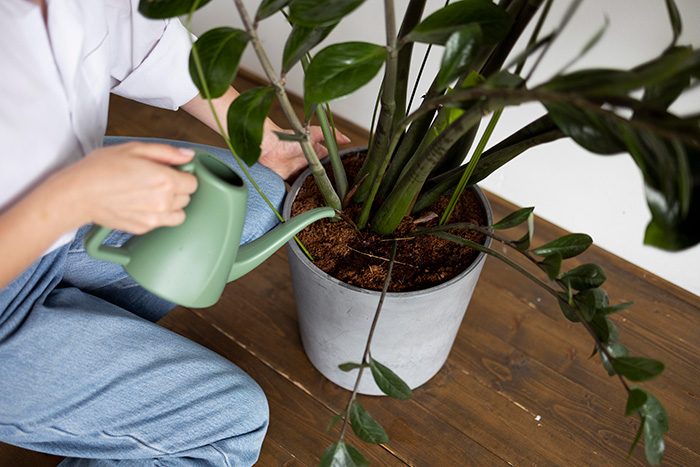
10: Supporting Urban Wildlife
Autumn can be tough on wildlife, so setting up bird feeders with sunflower seeds is a great way to help local species. Birds such as robins, tits, and sparrows will rely on feeders as natural food sources become scarce. Boma stocks a wide range of Henry Bell bird food and feeders, including seed mixes and suet balls, perfect for giving birds the energy they need during the colder months.
You can also clean out and disinfect birdhouses and nest boxes with warm water, green soap, and a brush before the winter months set in. Pile autumn leaves behind shrubs in sheltered spots to create wildlife shelters for hedgehogs, toads, or frogs, and add excess leaves to the compost or use as protective mulch for tender plants.
Also remove any fallen leaves and decaying vegetation from ponds, and use a net to keep them clear for winter—leave material out overnight for pond creatures to return to water.
Top tip: Mark International World Animal Day on October 4th by treating the garden wildlife with food, accessories, and shelter—find supplies in-store.
11: Work with London Clay and Microclimates
North and Central London soils often hold water—so improve clay-heavy beds in Hampstead, Crouch End, or Camden with garden compost or well-rotted mulch, giving roots air and room to grow.
Where drainage is tricky, especially in patio pots or raised beds, use gravel or crocks at the bottom to keep roots from sitting in water after autumn rain. Adapt your planting—choose shrubs known to tolerate clay soils such as Viburnum, Cornus, Pittosporum, or Mahonia, and avoid waterlogging by raising pots on planter feet throughout autumn and winter.
For gardens with tree cover or close buildings, focus on shade-tolerant ferns and spring bulbs like hyacinths, which thrive beneath London plane trees or in narrow side yards.
Choosing the Right Autumn Plants and Methods for Every London Space
If you’re seeking help transforming your garden (big or small) Boma’s planting services guide you through every step: assessing your sunlight and soil, recommending the right plants, planning the layout, and even providing planting support where needed. You’ll leave inspired and equipped to bring professional, site-specific design into your own outdoor haven.
Use the guide below to match your outdoor space and location to the best plant choices and methods this autumn—then experience how Boma can make the journey not only possible, but enjoyable.
| Outdoor Space Type | Best Plant Choices | Special Tips for Londoners |
| Balcony (e.g. Camden, Belsize Park) | Compact evergreens (Skimmia, Pittosporum), trailing ivy, cyclamen, heuchera | Use multi-level planters to maximize small footprints; choose lightweight pots and group for humidity |
| Courtyard/Patio (e.g. Highgate, St John’s Wood) | Ferns, shade-tolerant bulbs (hyacinth, bluebells), ornamental grasses | Emphasize vertical gardening and climbing plants (ivy, honeysuckle); ensure good drainage |
| Roof Terrace (e.g. Muswell Hill, Finchley) | Drought-tolerant grasses (Stipa, blue fescue), succulents, bay laurel | Use deep planters weighted for wind; consider irrigation for exposed, sunny spots |
| Large/Traditional Garden (e.g. Hampstead, Finchley) | Evergreen shrubs (Mahonia, Viburnum), lawn plants, tree underplanting with spring bulbs | Mulch to improve clay soil; plant leaf piles for wildlife and raise pots to prevent waterlogging |
Visit Boma for Stunning Autumn Displays, Advice and Supplies
October is a busy month for gardeners, and Boma Garden Centre is here to help you with all your autumn tasks, from planting spring bulbs and pruning roses to caring for your houseplants, Boma offers expert advice and a wide range of plants, tools, and supplies.
Pop in and visit us or shop online for delivery within London’s M25 to find everything you need to keep your garden thriving through the colder months.





